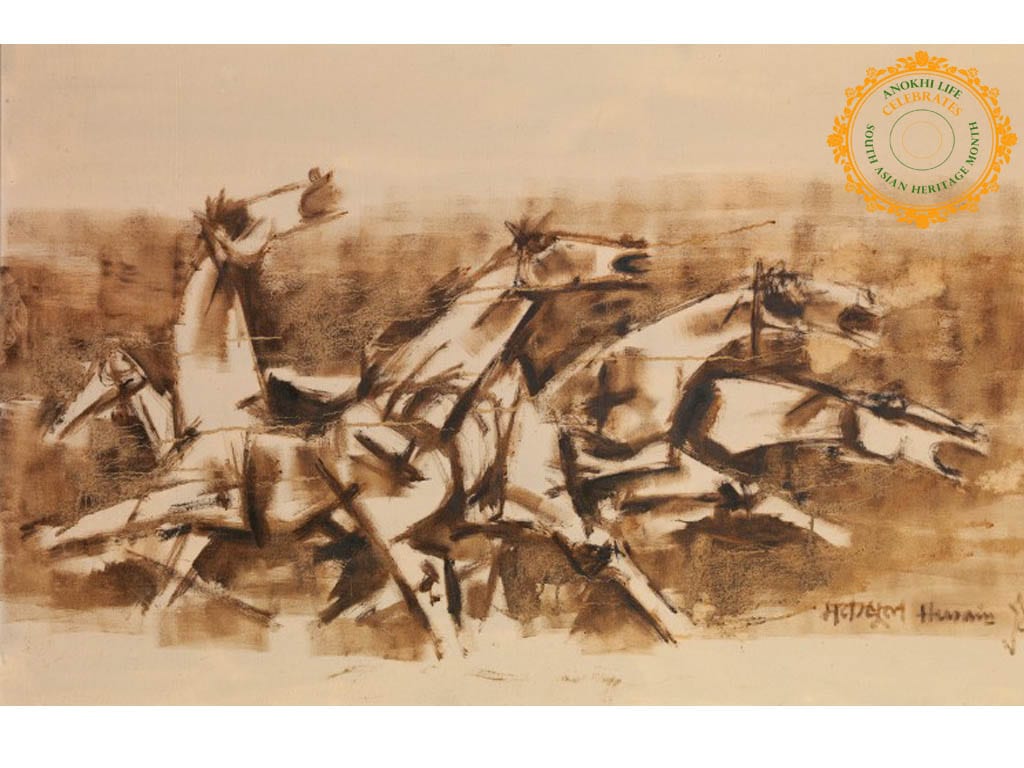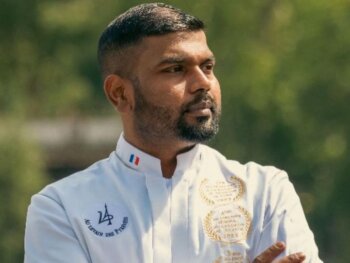In our four-part series honouring South Asian Heritage Month, we will introduce you to 15 important artists from India, Sri Lanka, Pakistan and Bangladesh, through the trained eye and critical thinking of nationally renowned curator and historian, Ali Adil Khan. These pioneers of modern art have charted a trajectory for South Asian art that puts it high on the global scale of recognition. To start things off, we look at the art history of India with 4 pioneering modern artists you should know.
*Click here to see our Art History Of Pakistan: 4 Pioneering Modern Artists You Should Know*
*Click here to see our Art History Of Bangladesh: 4 Pioneering Modern Artists You Should Know*
South Asia forms an inverted triangle extending from the heights of the Himalayas to the depths of the Indian Ocean. Stretching 2,000 miles from north to south, and east to west, it is home to almost one-fourth of the World’s population and an ancient and diverse group of people, that speak different languages, practice varied religions and come from rich backgrounds and cultures. Therefor, it is no surprise that the modern and contemporary art originating from South Asia is a vibrant milieu of diversity, spirituality and tradition.
Raja Ravi Verma (1848-1906)
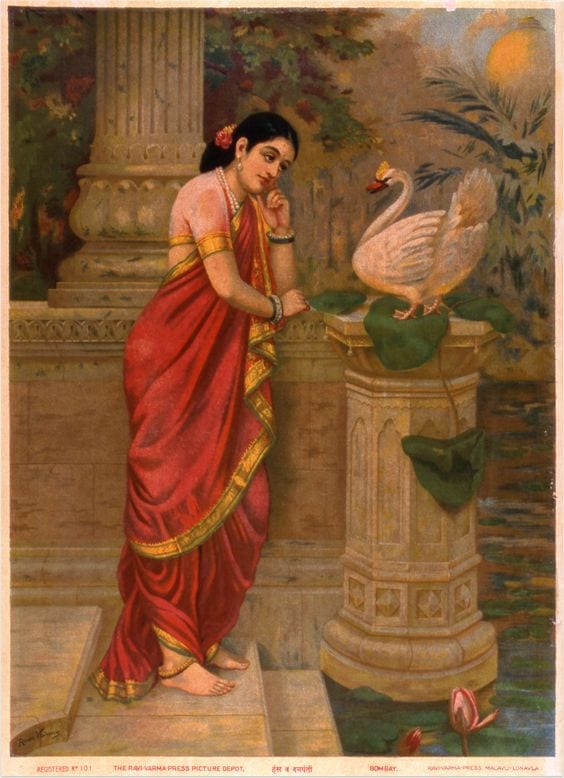
Raja Ravi Verma (1848-1906) is considered to be the father of modern art in India. He was the first to explore, master and adopt a fusion of European techniques with Indian sensibilities. He initially painted commissioned portraits of the Royal family and soon became in high demand across India due to his painterly skills and execution to perfection.
Ravi Verma is most well known for influencing the iconography of early India popular paintings and making available his mythical and religious scenes and figures through affordable lithographs and oleographs. In this way, he provided access, involvement and acceptance of the common people with fine art. His extraordinary depictions of Hindu deities and epics received wide acclaim and to this day can be found hanging in low income homes in small towns and villages, as well as galleries and homes of collectors in large cities across India. Later, a whole industry and practice of dressing up his lithographs emerged at the turn of the 19th century.
Ravi Verma lithographs come in varying sizes and are highly desirable and collectable in and outside of India. In 2008, a feature film Rang Rasiya (Colours of Passion) was made on the life and art of Raja Ravi Verma and starred Randeep Hooda, Paresh Rawal and Nandana Sen.
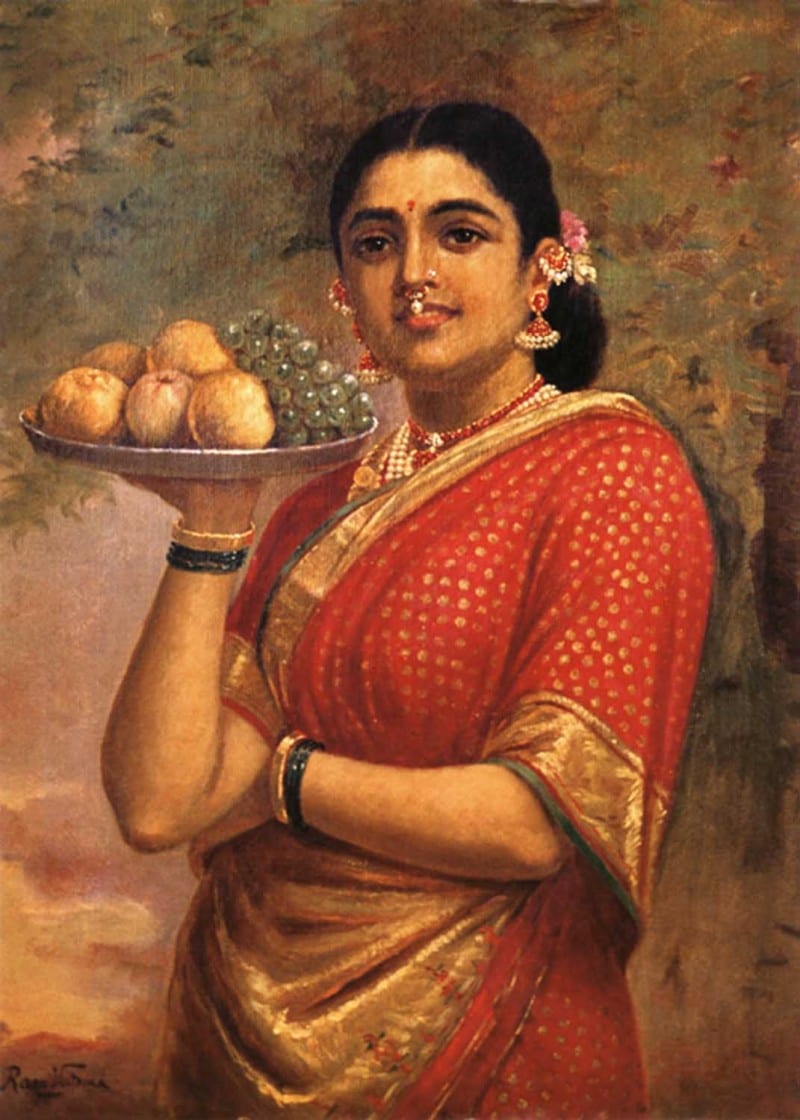

Amrita Sher-Gil (1913-1941)
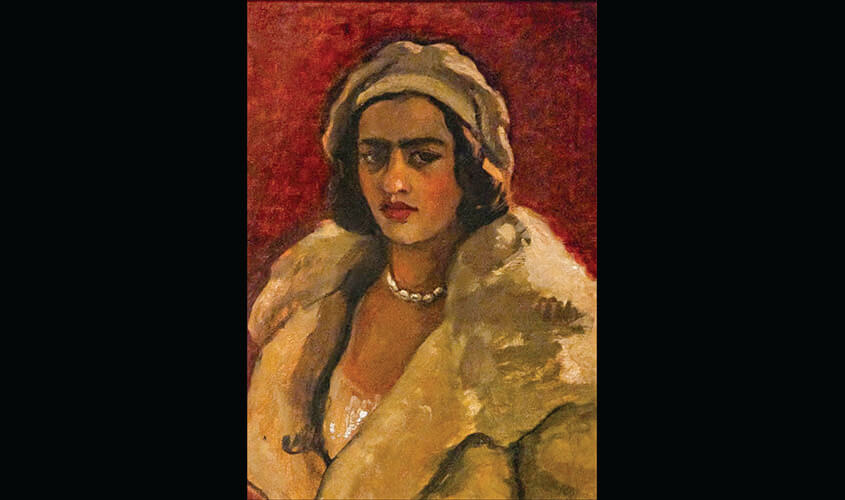
Amrita Sher-Gil (1913-1941) left a substantial and bold body of work during her short, but experientially rich life as a young and budding artist. She enthralled and impressed people across India at all levels, from the prime minister to the common man on the street, with her exceptional talent and creativity, and will continue to do so for many years to come in and outside of India.
Born in Budapest to an Indian (Sikh) father and a Hungarian mother, Sher-Gil grew up in Shimla and recognizing her extraordinary talents and self-confidence, was sent to Paris at the tender age of 16, where she was enrolled at the Ecole des Beaux Arts. Her genius was revealed at 19, when she won the Gold Medal at the Grand Salon. It was a singular honour for a young female student from South Asia. While in Paris, Sher-Gil worked in the studio of Lucien Simon and soon started to develop her own post-impressionist expressive style.
While in Paris from 1929-1934 she mastered the art of still-life, portraiture, figurative and nudes. Her Paris period work shows a strong influence of Cezanne and Gauguin. However, soon after she returned to India and developed her own style and use of subjects that touched with empathy on different aspects of life in India. At the peak of her career, her paintings explored aesthetics of modernism within the crude realities of her times. She was bold and beautiful, and someone way ahead of her time.
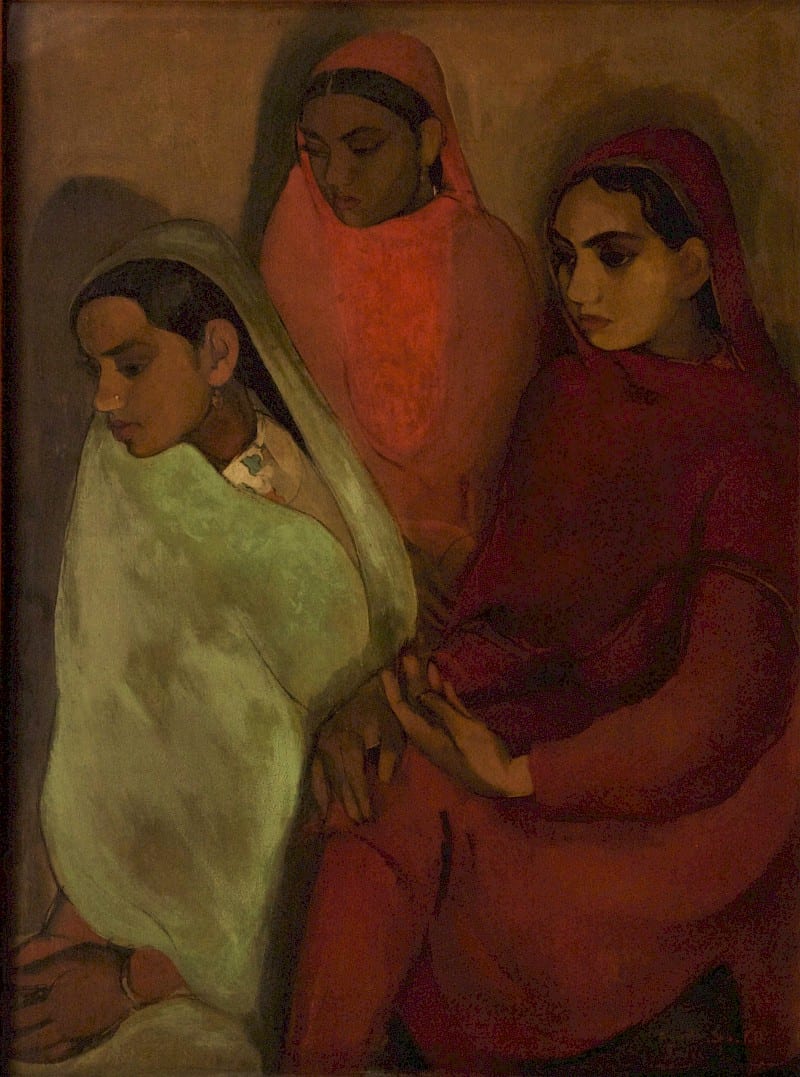

Francis Newton Souza (1924-2002)
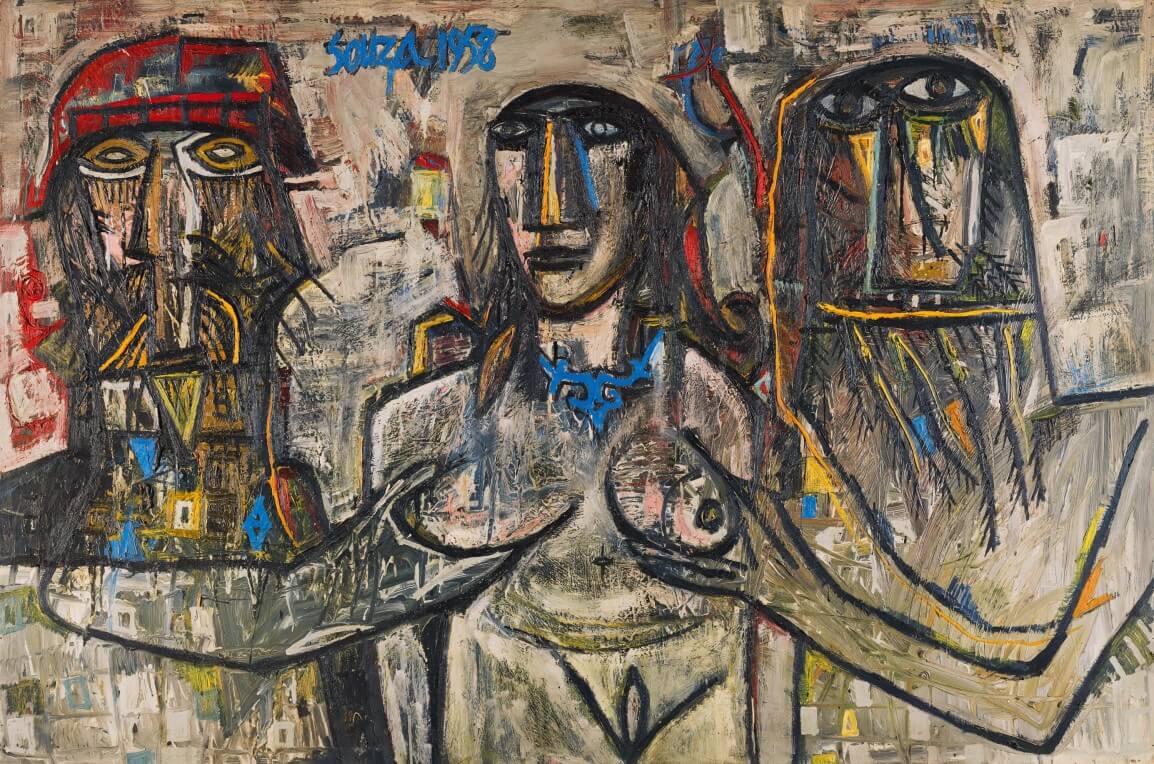
Francis Newton Souza (1924-2002) in 1947, after independence formed the Progressive Artists Group of Bombay, which other members like, M.F Husain, Raza, Gade, Ara, Bakre and later Gaitonde, Mehta and Padamsee, who collectively changed the course of modern art in India.
In 1945, Souza had joined the famous J.J. School of Art in Bombay (present day Mumbai) but was expelled due to his support of Gandhi and the Quit India Movement. He left for London in 1949 and struggled to survive in post-war Europe. His works of the 1950s explore controversial themes, like religion and sex, representing a dichotomy between good and evil.
He was obsessed with the female nude figure and his paintings done in an expressionist style could be seen as unattractive at best and grotesque at worst but were ahead of their times such as “Birth”, which currently holds the world auction record for the artist at $5 million CAD. During this period, he met Pablo Picasso in Paris and exhibited with Francis Bacon and Henry Moore in London. He often depicted himself and other suitors of women as monsters.
What is striking about his work, is a visceral and evocative sensuality that is sometimes violent and sometimes sexual. Being a restless soul, he moved to New York in the mid-60s and lived there until 2001. Over the course of his long career, Souza experimented with a number of genres and styles, but his strong figurative work and his line drawings done in the 1950s and 1960s are the most sought after by collectors. At the heart of Souza’s creativity was the belief that society’s evils shouldn’t be suppressed, but rather shared openly and confronted. Be it the hypocrisy of the church, the corruption, power and in-equality or the repression of sexuality.
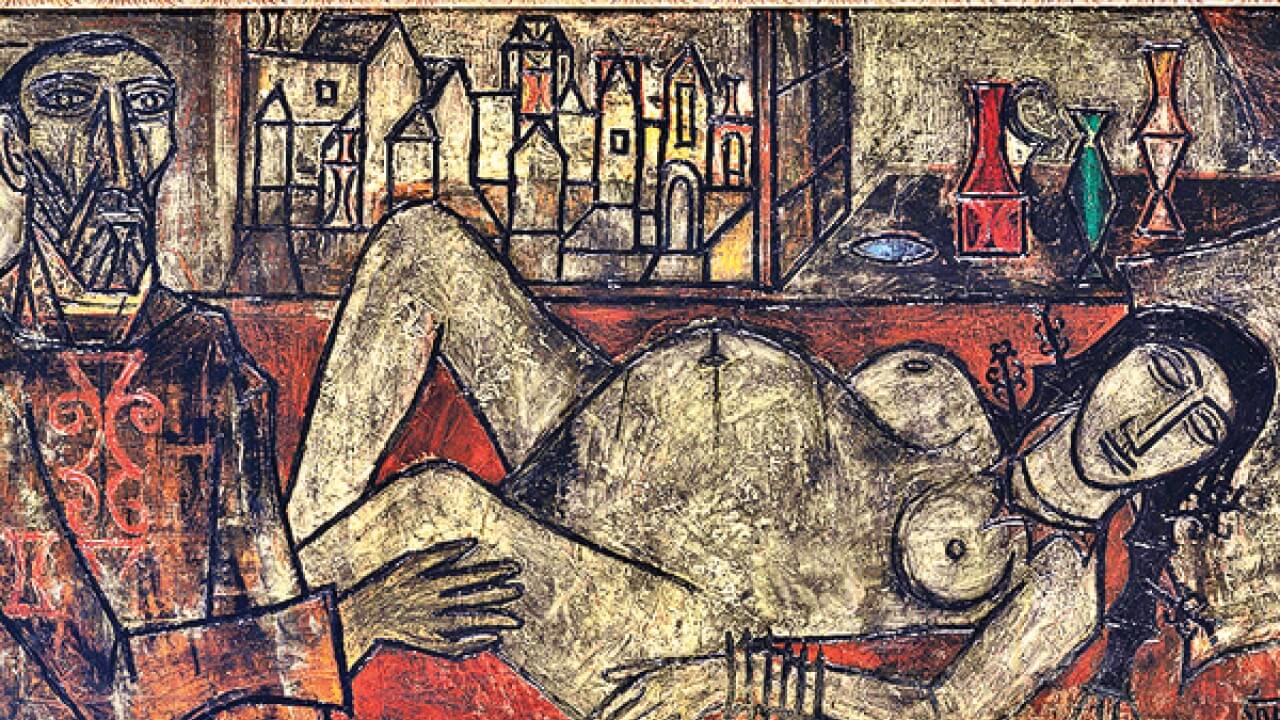
M.F. Husain (1915-2011)
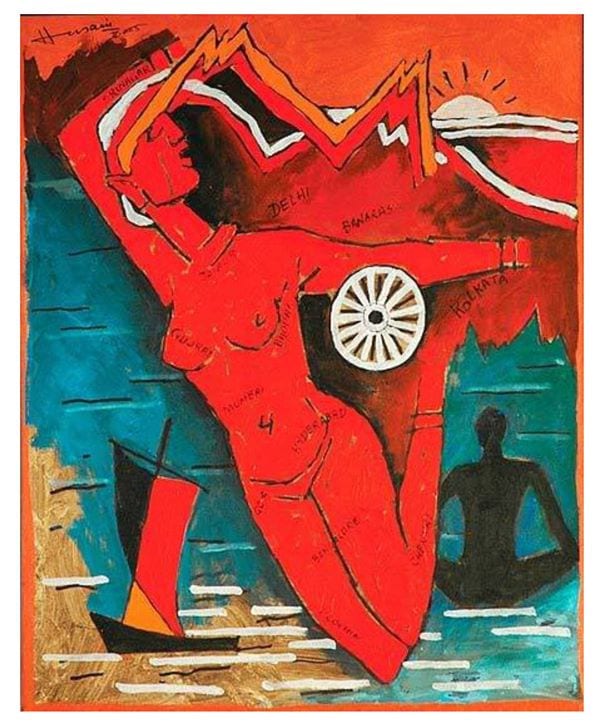
Maqbool Fida Husain (1915-2011) was highly controversial and uncompromising which led to his self-exile, and his art was mis-understood and misrepresented by the religious right in India. Known as the “Picasso” of India, he was enormously talented and energetic with his trademark free flowing white hair and beard. From his young 20’s when he painted large billboards for Indian cinemas in Mumbai to the vast number of large-size canvases he painted in his 90’s in London and Doha on the epic film Mughal-e-Azam and Arab history respectively.
A master of line and form, Husain was most well known for his bold strokes and figurative style, his favourite subjects were his trademark horses (because of the Muslim Shi’a iconography) people and Mother Teresa. He was well versed in Indian mythology and painted it profusely. His love for cinema resulted in him making movies including Through The Eyes Of A Painter (1967) which won the Golden Bear Award at the Berlin International Film Festival. He later went on to make two other artistic productions Gaja Gamini (2000) which was an ode to the woman and starred his muse Madhuri Dixit-Nene, Shah Rukh Khan and Naseeruddin Shah. In 2004 he also directed The Tale Of Three Cities (Meenaxi) starring Tabu, Kunal Kapoor and Raghuvir Yadav, which received limited commercial success. One of Husain’s eccentricities and visual points of recognition was that he preferred to walk barefoot in order to connect with the earth and was often seen in cities from Mumbai to London to Toronto walking sans footwear.
In 2007, I had the rare and distinct pleasure of meeting the self-exiled Husain in London and spent two days with him in his studio setup at K. Asif’s Park Lane penthouse apartment. In between working on his Mughal-e-Azam series which comprised of more than 50 large format canvases of 5×8 feet on which he captured in his style the most moving scenes from the epic film, we discussed modern art and artists from South Asia, including some of his contemporaries, like Krishen Khanna (India) Sultan (Bangladesh), George Keyt (Sri Lanka) and Sadequain (Pakistan) to be amongst the greatest masters to come out of South Asia.
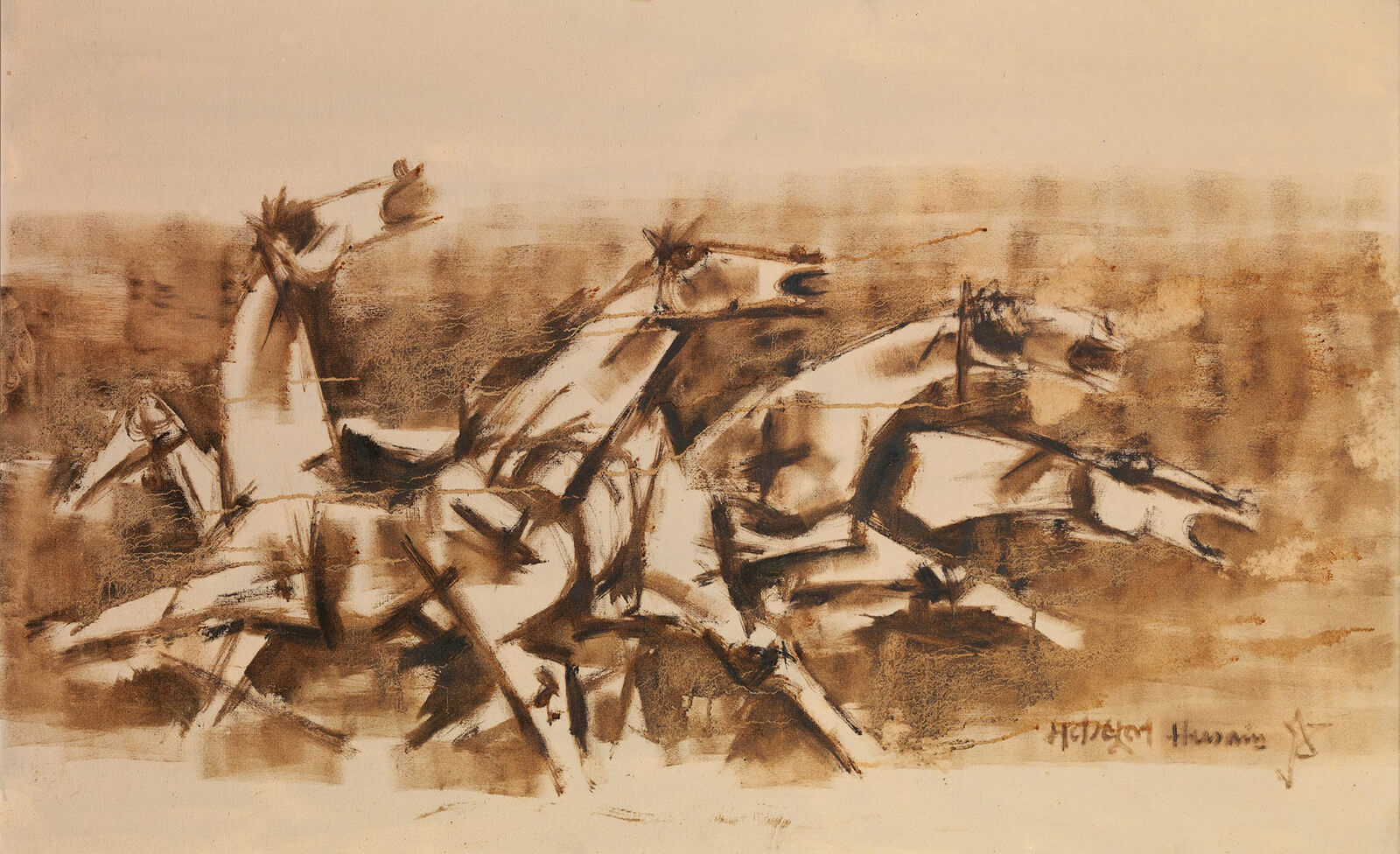
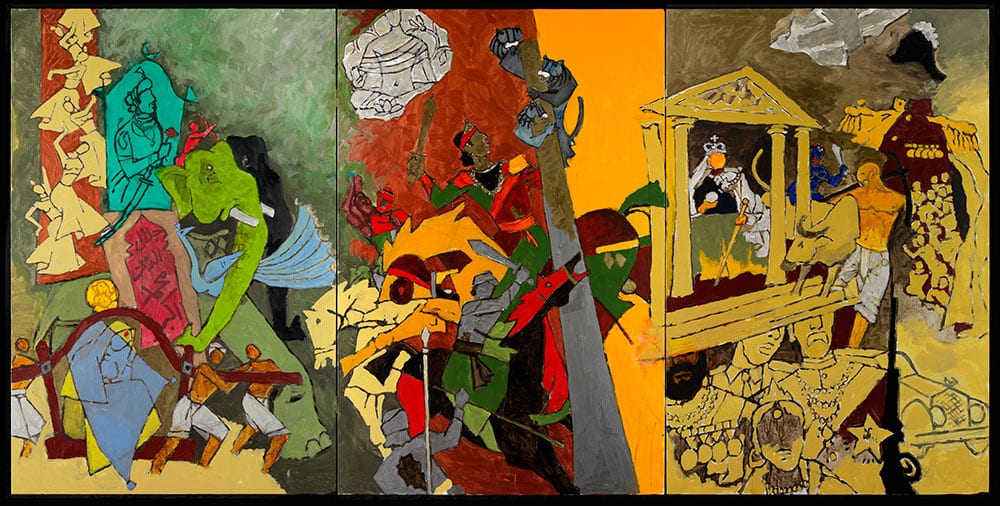
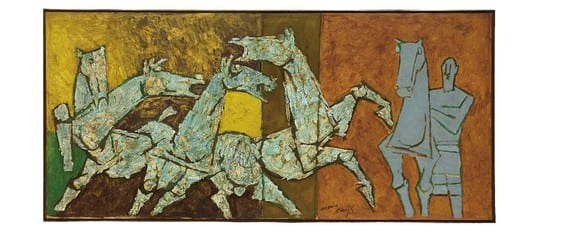
Ali Adil Khan has also served on the advisory boards of the Ontario Arts Council, Canadian Community Arts Initiative and the Art Gallery of Mississauga. He has been profiled in The Toronto Star, Hamilton Spectator, Calgary Herald, Mississauga News and Desi News. He can be reached at [email protected] or 647-505-4658
Ali Adil Khan
Author
Ali Adil Khan (@ali.a.khan) is the founder of the South Asian Gallery of Art & director of the SAGA Foundation in Toronto. He's an art critic, curator, writer & collector. He has curated exhibitions in Canada & served as an advisor to various museums including the ROM & Aga Khan Muse...


















































